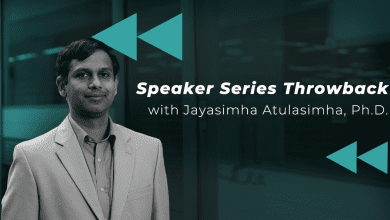
Forget the constant game of hide-and-seek with darkness. Infrared technology, pioneered by experts like Nibir Dhar, Ph.D. offers a superpower – the ability to see heat, like a secret sixth sense. Originally developed to give soldiers the upper hand at night, this remarkable field, championed by Dr. Dhar through his work with the US Armed Forces and continued work at Virginia Commonwealth University, is now poised to revolutionize everything from medicine to agriculture.
Imagine a firefighter navigating a smoke-filled inferno, not with sight, but with the ability to see the faint heat signatures of trapped victims. That’s the magic of infrared cameras, a technology Dr. Dhar is actively shaping the future of at VCU. Unlike our eyes, which are limited to the visible light spectrum, these cameras perceive the world in terms of heat – a whole new dimension of perception. A doctor can use this to analyze blood flow patterns for early disease detection, while a security guard can pinpoint intruders even in pitch darkness.
But infrared isn’t a one-size-fits-all solution. Two key players make this vision a reality: quantum detectors and thermal detectors. Quantum detectors, requiring cryogenic coolers, are the snipers of the infrared world, honing in on specific heat signatures with laser-like precision. Perfect for tasks requiring extreme detail, they’re the reason astronomers can peer through cosmic dust clouds. Thermal detectors, on the other hand, are the workhorses. They capture the overall heat signature of an object at room temperature, making them ideal for detecting humans, then display image intensifiers in the familiar green glow of night vision goggles ideal for very low light conditions.
The future of infrared is brimming with potential. Advancements in detector design promise even sharper “heat vision,” while data fusion – combining information from infrared and other sources – will paint an even richer picture of the world. Imagine secure, high-speed data transmission using infrared light beams, transforming communication infrastructure.
However, unlocking infrared’s true potential requires a bridge between the academic world, where groundbreaking discoveries happen, and the world of industry, where those discoveries become reality. Collaboration is key to ensure these advancements translate into practical applications that improve our lives.
Finally, the rise of artificial intelligence (AI) promises to be a game-changer. AI can analyze vast amounts of infrared data, spotting patterns and anomalies that might escape human attention. This could be a powerful tool for everything from security threat identification to predictive maintenance in factories. But a word of caution – biased AI can lead to skewed results and missed threats. We must ensure ethical development of AI alongside infrared technology, so it serves humanity for the greater good.
Infrared technology is more than just a military marvel. It’s a sixth sense waiting to be unleashed, a key to unlocking a future filled with innovation and progress. As we delve deeper into this unseen world, the possibilities are as endless as the spectrum of heat it reveals.
Click here to watch Nibir Dhar, Ph.D.’s talk on the future of infrared.



